 Aircrew Chronicles
Aircrew Chronicles  |
Aircrew Losses
|
Nose Art
|
BCATP
|
Lancaster
|
Media
|
Aircrew Losses
|
Nose Art
|
BCATP
|
Lancaster
|
Media
 Aircrew Chronicles
Aircrew Chronicles  |
Aircrew Losses
|
Nose Art
|
BCATP
|
Lancaster
|
Media
|
Aircrew Losses
|
Nose Art
|
BCATP
|
Lancaster
|
Media
Bomber Command Aircrew Chronicles
|
Thomas Richard Norman Fetherston Jr. was born on May 13 1922, the only child of Thomas Norman and Ann Fetherston who operated a grocery store in Nanton, Alberta. It was said that Tom jr. loved horses and dogs. Later the family moved to High River where they purchased another grocery store. Thomas completed high school in High River when he was eighteen and enlisted with the Royal Canadian Air Force on April 21 1941. Thomas Fetherston (R92966) was posted to No. 2 Initial Training School (Regina) and then to No. 5 Elementary Flying Training School (High River) on July 15 1941 where he began flying training on de Havilland Tiger Moth aircraft. On September 1 1941, he was posted to No. 10 Service Flying Training School at Dauphin, Manitoba where he flew twin-engined Cessna Crane aircraft and received his wings. Prior to continuing his training overseas, Thomas married Helen Fraser, with whom he had attended high school in High River. She was pregnant when he left and a daughter, Sharon Marianne, was born while Thomas was serving overseas. Thomas was posted to No. 15 Advanced Flying Unit (Leconfield) on February 18 1942 flying Airspeed Oxfords and then to No. 17 Operational Training Unit (Upwood) on May 25 1942 where he flew both Blenheim Mk I's and Mk IV's before being transferred to No. 28 OTU (Wymeswold) where he completed his training on Wellingtons on October 17 1942. He was then posted to No. 102 Sqn at RAF Pocklington where he began flying Halifax bombers. A rookie pilot's first exposure to combat was generally two "Second Dickie" flights, where he would be taken on raids with an experienced crew prior to flying with his own crew as captain on an operational flight. Sgt. Fetherston completed his first "Second Dickie" flight, a raid to Genoa with P/O King, on November 7 1942. On November 9 1942, Sgt. Fetherston took off with F/S G.A. Neville for his second, "Second Dickie" operation - a raid to Hamburg. Their aircraft did not return. The Halifax bomber was one of two 102 Sqn aircraft that was lost that night. Sgt. Fetherston's crew, with whom he never had a chance to fly with on operations, included: Sgt. Buttle; Sgt. Stewart (Navigator); Sgt. Bibby (Wireless Operator/Air Gunner); and Sgt. Stacey. for making Gerlof Molenaar's story and the related photos and other material available to our museum. 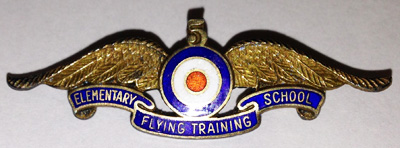 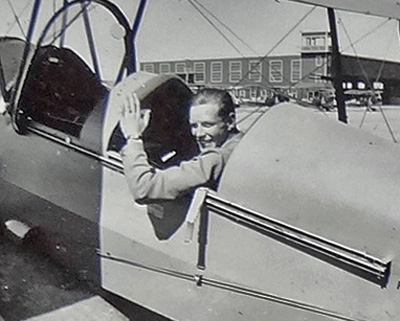 Thomas Fetherston in a Tiger Moth at 5EFTS High River. |
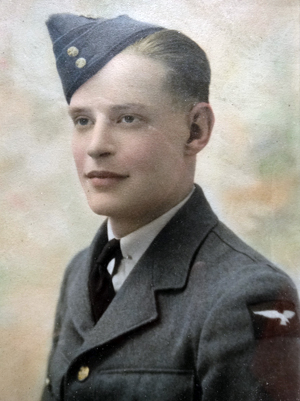 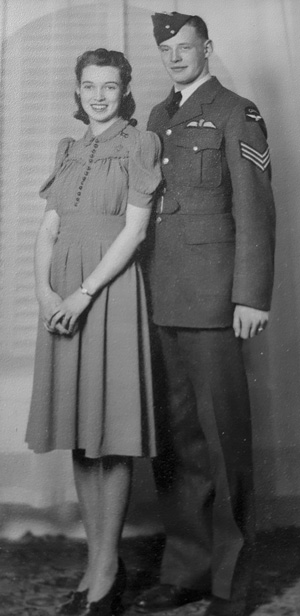 |

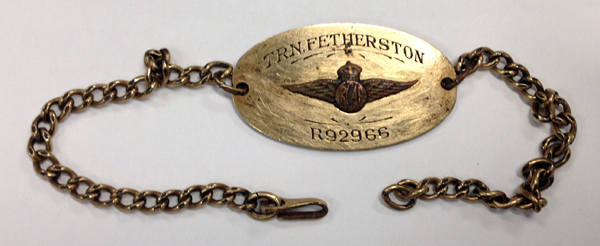
On a Sunday morning in April 1999, Henk de Jong (my wife's uncle) was walking on the beach of Ameland, Holland, between Nes and Ballum. At one point his attention was drawn to a bracelet covered with rust. It probably ended up on the beach during the most recent sand replenishment. At home, he cleaned the bracelet. A name became visible, T.R.N. Fetherston and registration R.92966. Then he came to me and asked if I could find more information about the name on the bracelet.
The first thing I did was to search on the website of the Commonwealth War Graves. I found out that Fetherston was from 102 Squadron and was reported missing in action on November 9, 1942. We found out that he was crew member on a four-engined bomber of the type Halifax II with the registration W864, DY-F. The target was Hamburg.
The RAF carried out an attack on Hamburg in which 213 aircraft took part, 74 Wellingtons, 72 Lancasters, 48 Halifaxes and 19 Stirlings. The forecast for that evening was overcast with strong northwesterly winds. But during the flight the weather was worse than predicted, a thick layer of clouds, ice on the plane, and a lot more wind than predicted. Besides the poor weather, the assault force was also attacked by German fighters and flak. There were fifteen aircraft lost, namely five Lancasters, four Stirlings, four Wellingtons, and two Halifaxes.
Halifax W7864 (DY-F) was one of the two Halifaxes lost that night. It was a 102 Sqn aircraft based at Pocklington. The Halifax crashed into the sea about 40 km west of Wijk aan Zee. The entire crew perished and consisted of the following persons: Flight Sergeant G.A. Neville (Pilot); Flight Sergeant T.R.N. Fetherston (Co-Pilot); Pilot Officer T.E. Dunlop (Navigator); Flight Sergeant J.K. Player (Bombardier); Sergeant F.W. Hope (Flight Engineer); Flight Sergeant N. Sidorchuck (Wireless Operator); Sergeant C.C. Brook (Airgunner); Sergeant M.V. Riddle (Airgunner). All were from the Royal Canadian Air Force, except Sergeant F.W. Hope. He was from the Royal Air Force. The aircraft and its crew were never found. None of them has a known grave. They are, lost without a trace.
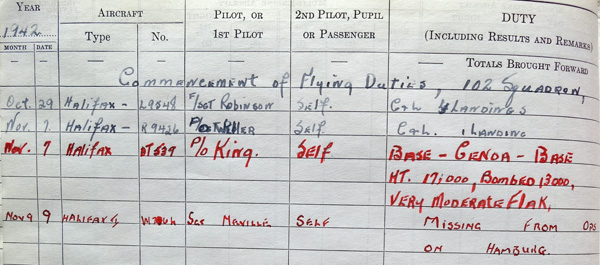
With all this information, I contacted Klass van der Veen. I asked Klaas if he could help me to find relatives of T.R.N. Fetherston of Canada. Fetherston is not a very common name, so he started to call all the people with the name of Fetherston. This proved successful as he came in contact with a cousin of Thomas Fetherston. He told Klaas that Thomas's widow was still alive and that she had a daughter. When the widow, Helen, was informed that the bracelet from her late husband had been found on Ameland, it brought many emotions up. Though later remarried, Helen still thought that one day Thomas would stand suddenly before here. It was very difficult for her to believe that Thomas was dead.
Following a written request, the mayor of Ameland asked Helen and the daughter if it was possible for them to visit Ameland. Helen was not able to make the long journey because of health problems. But her daughter, Sharon, accepted the mayor's invitation. Sharon told us that she was eight months old when her father died. She unfortunately never knew her father. On July 12 2000, Sharon and her husband Preston arrived on Ameland. Sharon wanted to visit the place where the bracelet was found. She put her hands into the sea, and during that emotional moment she felt connected to him.
On July 14, the official handover was made on the beach at Ballum with great press interest. Sharon, who was very impressed, took the bracelet from the hands of Mayor Wilpstra. After the ceremony, Sharon said that her mother finally could close this chapter in her life.
At Sharon's request, a monument was placed in the cemetery at Nes. The monument was unveiled by Mayor Verhoeven on May 4 2001.